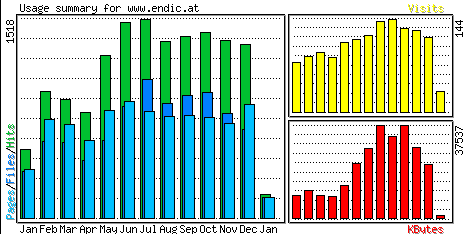









Pages are those URLs that would be considered the actual page being requested, and not all of the individual items that make it up (such as graphics and audio clips). Some people call this metric page views or page impressions, and defaults to any URL that has an extension of .htm, .html or .cgi. Files
Files represent the total number of hits (requests) that actually resulted in something being sent back to the user. Not all hits will send data, such as 404-Not Found requests and requests for pages that are already in the browsers cache
Hits A request made to the server is considered a “hit”. A request can be for any object, an html page, a graphic image, an audio file, a CGI script, etc. So, “hits” are the total number of requests that were received during the specified report period.
Visits A “visit”, on the other hand, is a series of “hits” that are deemed to have come from the same browser within a certain amount of time. A “visit”, therefore, represents a browser that came to your site for a while and then left.
Each “visit” is composed of many more “hits”. For example, when a browser requests one page on your site, the stats page will report 1 hit for the page request, plus 1 more hit for each image or other object (flash object, javascript file, etc) that was referenced on that page. That is why hits are always greater than visits. KBytes
The KBytes tells you how many KiloBytes of traffic your webspace have “created” in the period, mentioned to the left on the page.